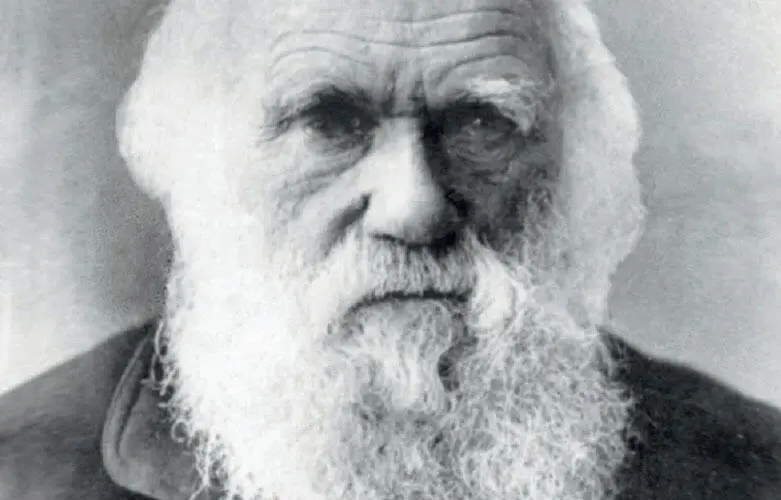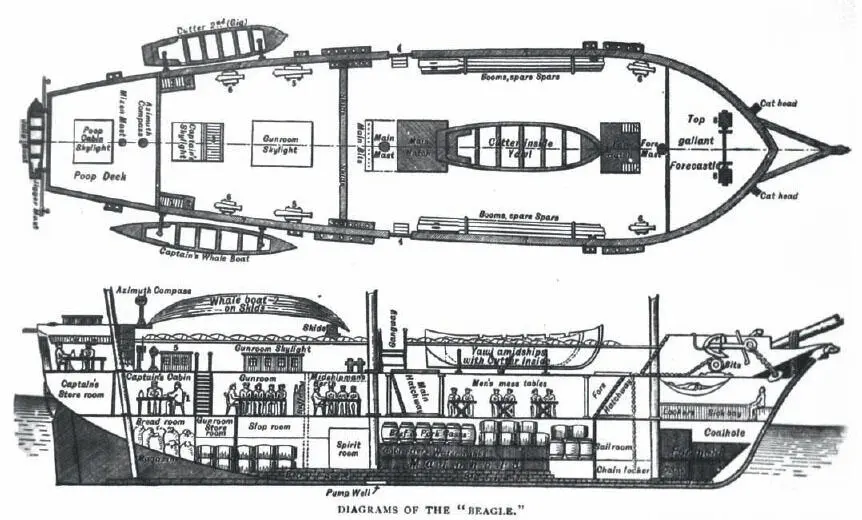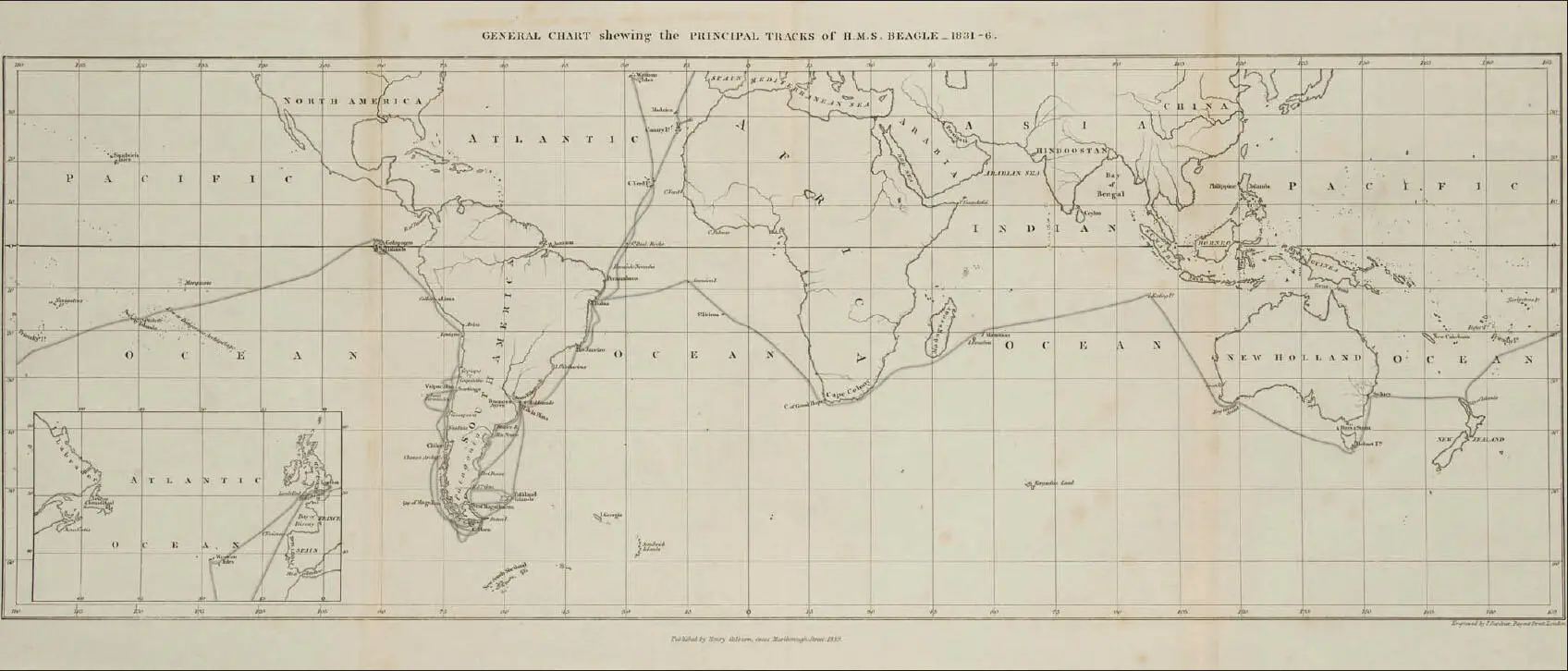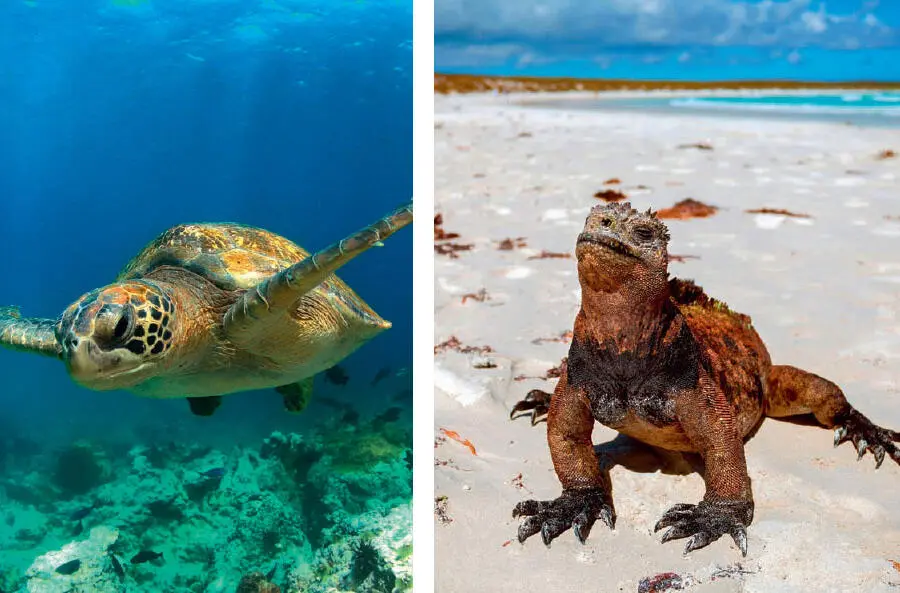Introduction to Darwin’s On the Origin of Species by Means of Natural Selection
WHEN
1831–6
ENDEAVOUR
Charles Darwin was the naturalist on this five-year circumnavigation of the world.
HARDSHIPS & DANGERS
The two summers spent around Tierra del Fuego and Cape Horn, with violent weather and unhelpful natives.
LEGACY
Darwin amassed evidence from the many places visited on the voyage that led him to develop the theory of evolution.

Charles Darwin, photographed towards the end of his life.
Charles Darwin served as the naturalist of the five-year voyage of the surveying ship HMS Beagle , during which it circumnavigated the world. His observations of the natural world, particularly in the southern hemisphere, provided the evidence which led him to develop the theory of evolution.
The university drop-out
Darwin was born in Shrewsbury in 1809, the son of a prominent local physician and the grandson of two leading lights of the Industrial Revolution, Josiah Wedgwood and Erasmus Darwin. He was educated at Shrewsbury School, and in 1825 he went with his brother to study medicine at Edinburgh University. His dislike of anatomy and surgery quickly drove him away from a career in medicine and he left Edinburgh without a degree in 1827. The following year, he started at Christ’s College Cambridge, with the aim of becoming an Anglican clergyman. Most importantly, he became a friend of John Henslow, a botany professor who enthused Darwin with a love of and fascination in nature.
Darwin graduated in 1831 and was then recommended by Henslow as a gentleman collector for what was planned as a two-year trip to South America, commenting that his recommendation was ‘not on the supposition of yr. being a finished Naturalist, but as amply qualified for collecting, observing, & noting any thing worthy to be noted in Natural History’. After some persuasion, Darwin’s father agreed to the trip (important because he had to fund all his son’s costs, apart from food, which was provided by the Admiralty).
Into the open ocean
The trip was to be on HMS Beagle , a small survey ship that was 27 m (90 ft) long and weighed in at around 245 tonnes (241 tons). The boat was captained by Robert Fitzroy, a keen amateur naturalist and scientist, and, along with surveying the coast of South America, one of its missions was to trial the new Beaufort wind scale. Darwin shared a cabin with the ship’s mate and a midshipman, and it was also his study. And so it was on 27 December 1831, HMS Beagle sailed out of Plymouth — a day late, for the crew had celebrated Christmas Day too enthusiastically and were unfit to leave the day before. Darwin was soon badly stricken by seasickness, a bad beginning to a long voyage.
It was too rough to land on Madeira and, because there had been a cholera outbreak in England, they were refused permission to land in the Azores. On 16 January, they reached the Cape Verde islands, where Darwin’s work of observation, collecting and recording began. His questioning mind could be seen at work — why for example, was there a band of shells 14 m (45 ft) above sea level in a cliff when such a band would have been formed under the sea?

HMS Beagle , as equipped for the voyage. Darwin shared the poop cabin (top left in the cross-section) with two others and with the ship’s library of 400 books.
The first new species
The Beagle reached the coast of Brazil by the end of February 1832, and while the ship did much surveying work, Darwin spent much of the next six months on land, exploring and gathering large collections of specimens from the country around Rio de Janeiro, Buenos Aires and Bahia Blanca. By the end of November, Darwin had shipped back two consignments of specimens, from preserved beetles to fossils of animals previously unknown.
The Beagle then sailed south, to Tierra del Fuego, arriving there on 17 December: ‘...we were saluted in a manner becoming the inhabitants of this savage land. A group of Fuegians partly concealed by the entangled forest, were perched on a wild point overhanging the sea; and as we passed by, they sprang up and waving their tattered cloaks sent forth a loud and sonorous shout.’
Lessons from the primitives
Darwin was shocked by the primitive nature of the Fuegians (meeting one group he commented ‘these were the most abject and miserable creatures I anywhere beheld’). Puzzled by why anyone would live such a tough life in so unforgiving a place he concluded ‘Nature by making habit omnipotent, and its effects hereditary, has fitted the Fuegian to the climate and the productions of his miserable country.’

The route of the Beagle , as recorded by Captain Fitzroy in his account of the voyage, published in 1839.
The Beagle ventured to Cape Horn: ‘we saw on our weather-bow this notorious promontory in its proper form — veiled in a mist, and its dim outline surrounded by a storm of wind and water’. The weather around Cape Horn was severe and the ship was nearly overwhelmed:
‘ At noon a great sea broke over us … The poor Beagle trembled at the shock, and for a few minutes would not obey her helm; but soon, like a good ship that she was, she righted and came up to the wind again. Had another sea followed the first, our fate would have been decided soon, and for ever.’

HMS Beagle in the Strait of Magellan, from an 1890 edition of Darwin’s Journals . Monte Sarmiento, ‘the most sublime spectacle in Tierra del Fuego’ according to Darwin, looms over the scene.
In April 1833, the Beagle left Tierra del Fuego for the Falkland Islands, very recently after Britain had reasserted sovereignty, replacing the Argentinians, and then returned to Montevideo. While the Beagle continued its survey work, Darwin explored inland around Buenos Aires and Montevideo, rejoining the Beagle on 28 November. They returned to Tierra del Fuego and then sailed along the Strait of Magellan: ‘The inanimate works of nature – rock, ice, snow, wind, and water – all warring with each other, yet combined against man – here reigned in absolute sovereignty.’ Finally, on 10 June 1834 they reached the Pacific, and on 23 July they arrived at the warmth of Valparaiso. From here Darwin went on a six-week expedition into the Andes.
The surveying of southern Chile continued into 1835. Here he saw the effects of a devastating earthquake on the city of Concepción; he noticed that rocks has been forced upwards by the earthquake, evidence of the force of rock movement that was slowly pushing up the Andes. In the months that followed he undertook various inland expeditions until 7 September, when the Beagle sailed from Peru for the Galapagos Islands.

The green sea turtle (left) and the marine iguana (right) were two of the animals on the Galapagos Islands that fascinated Darwin.
Читать дальше
















